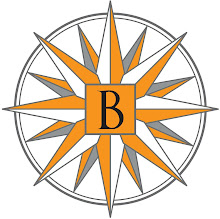 In the course of doing research for our lighthouse maps, we came across widely varying estimates as to the number of lighthouses in early 19th century America. Which to believe?
In the course of doing research for our lighthouse maps, we came across widely varying estimates as to the number of lighthouses in early 19th century America. Which to believe?We were stumped. Then after months of exhaustive Googling, we hit the jackpot: THE AMERICAN STATE PAPERS: Documents, Legislative and Executive of the Congress of the United States, from the First Session of the First to the Third Session of the Thirteenth Congress, Inclusive: Commencing March 3, 1789, and Ending March 3, 1815.
Above: Sandy Hook, NJ (1764), the oldest standing U.S. lighthouse. Illustration by Peter M. Mason, from Mid-Atlantic Lighthouses: Illustrated Map & Guide.
From an 1804 report in THE AMERICAN STATE PAPERS:
Our own Government has attended to the erection of light houses, with a vigilant eye. Already their number on our extended sea coast amounts to thirty-one...Those lighthouses, listed north to south, were in a statement "shewing" expenses:
New Hampshire: Portsmouth; Massachusetts: Boston, Nantucket, Nantucket Beacon, Cape Roge [Cape Pogue], Thatcher's Island, Plum Island, Plymouth, Seguin Island [now in Maine], Baker's Island, Cape Cod, Wigwam Point [Annisquam], Gayhead; Rhode Island: Newport; Connecticut: New London, Faulkner's Island, Lynde's Point; New York: Montauk, Sandy Hook, Eaton's Neck; Delaware: Cape Henlopen; Virginia: Cape Henry, Smith's Point, Old Point Comfort; North Carolina: Cape Fear, Cape Hatteras, Shell Castle [off Ocracoke Island]; South Carolina: Charleston, George Town; Georgia: Tybee.In 1811 Winslow Lewis won a contract to outfit all U.S. lighthouses with his patented lighting system, which was a cheap imitation of the Argand system used in Europe (an example of the need for international copyright protection). He listed 45--in no discernible order, whether geographical, alphabetical or financial:
New Bedford
Gay Head
Cape Page [Cape Pogue]
Nantucket
Chatham, 2 lights
Cape Cod
Plymouth, 2 lights
Boston
Baker Island, 2 lights
Cape Ann
Wigwam Point
Newburyport, 2 lights
Portsmouth
Portland
Seguin
Franklin Island
West Quoddy
Scituate
Whitehead
St. Simonds
Sapelo Island
Charleston, S.C.
Georgetown, S.C.Cape Fear
Cape Lookout
Cape Henry
Cape Hatteras
New Point Comfort
Old Point Comfort
Smith’s Point
Cape Henlopen
Sandy Hook
Montauk Point
Little Gull Island
Eaton’s Neck
New London
Faulkner’s Island
Lynde Point
Five Mile Point
Fair Weather Point
Watch Hill
Newport
Point Judith
Tybee
Wood Island











